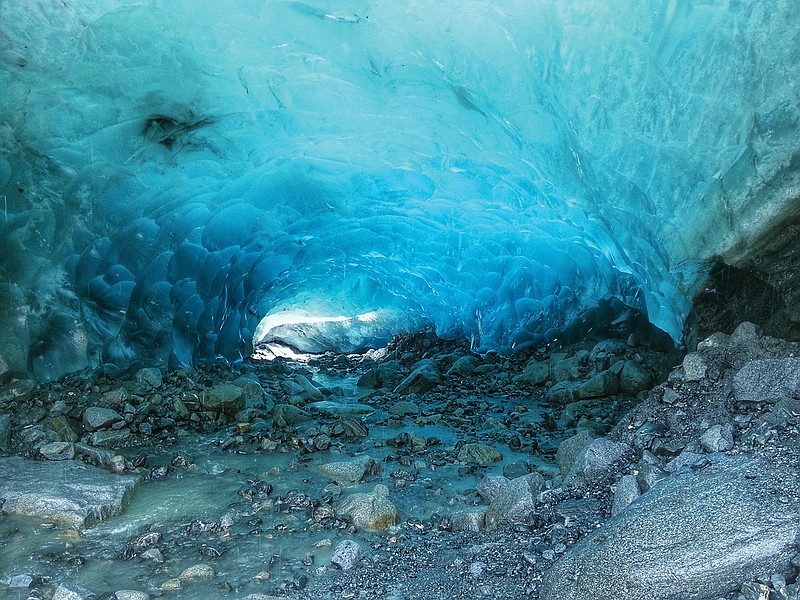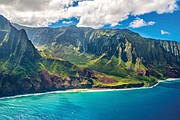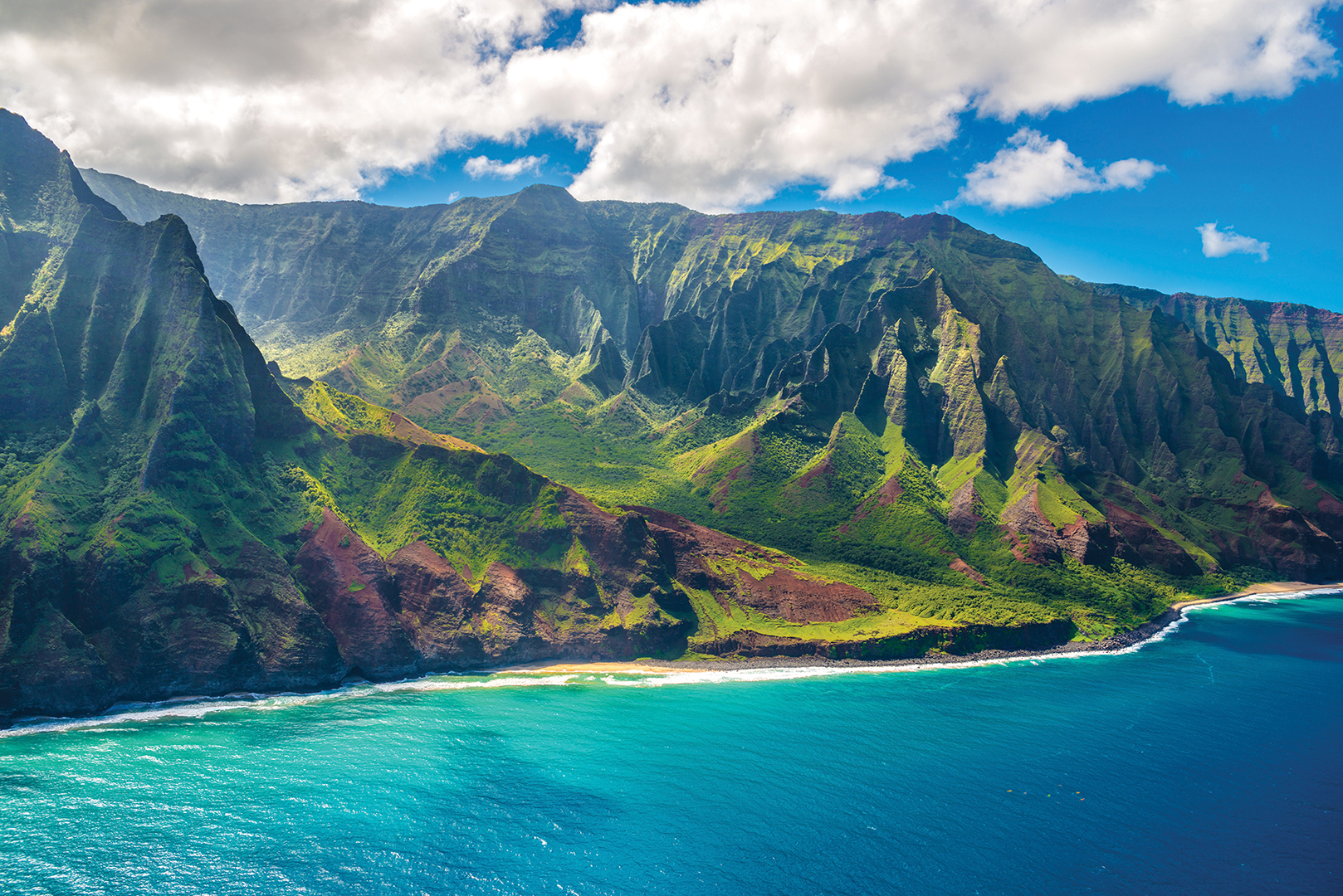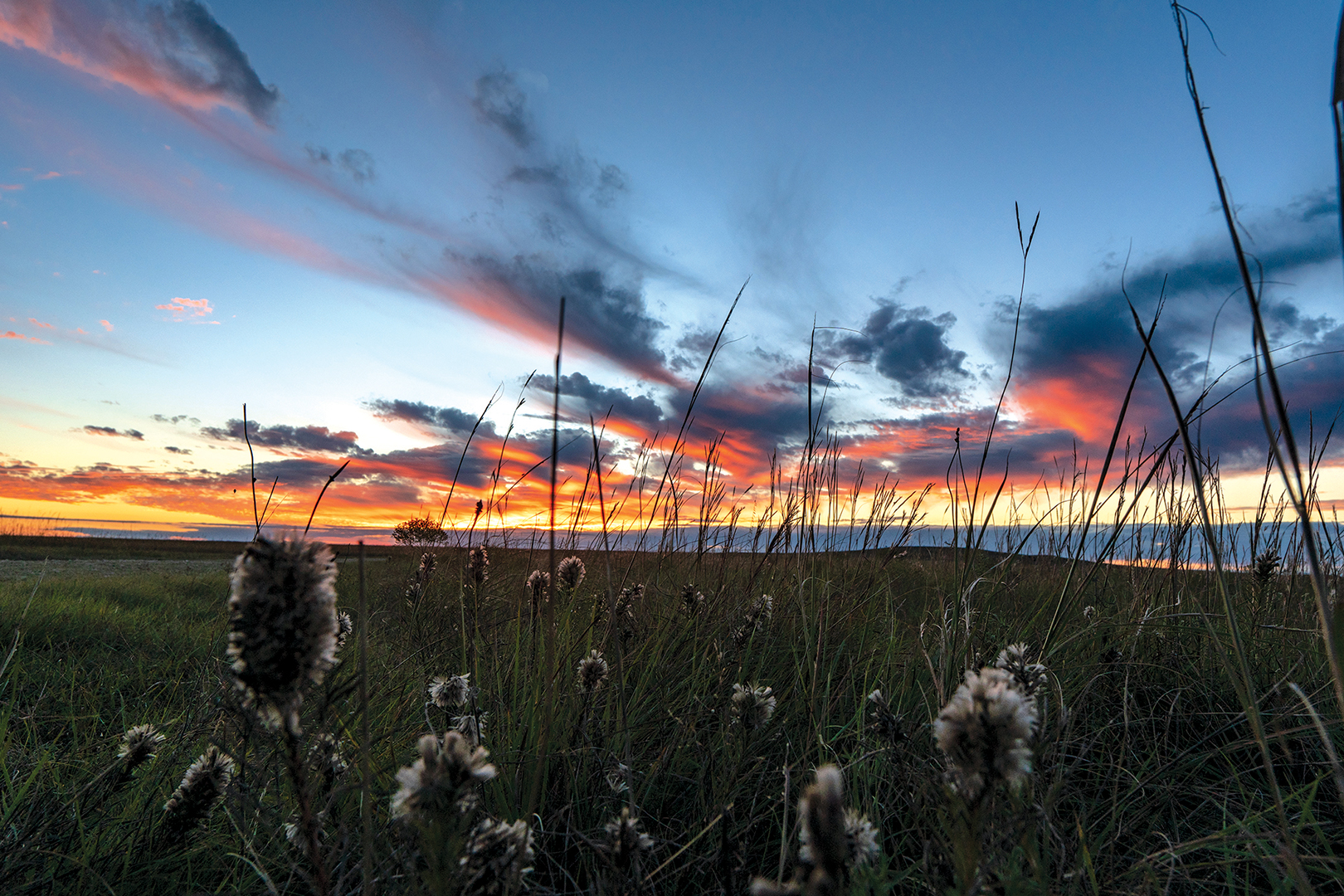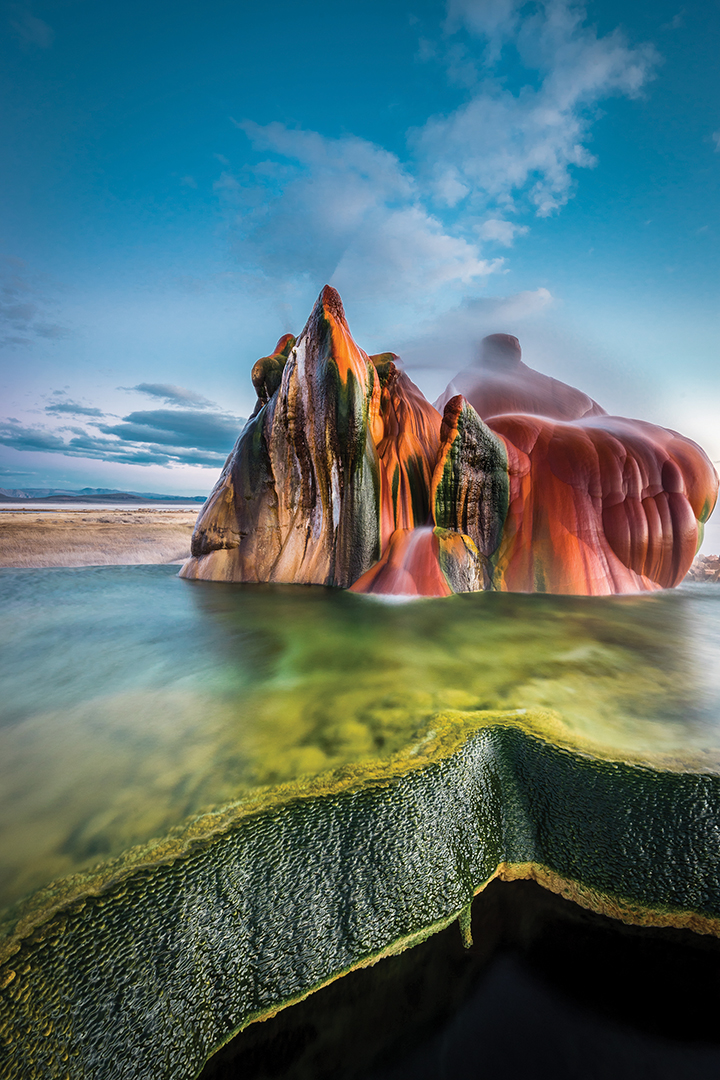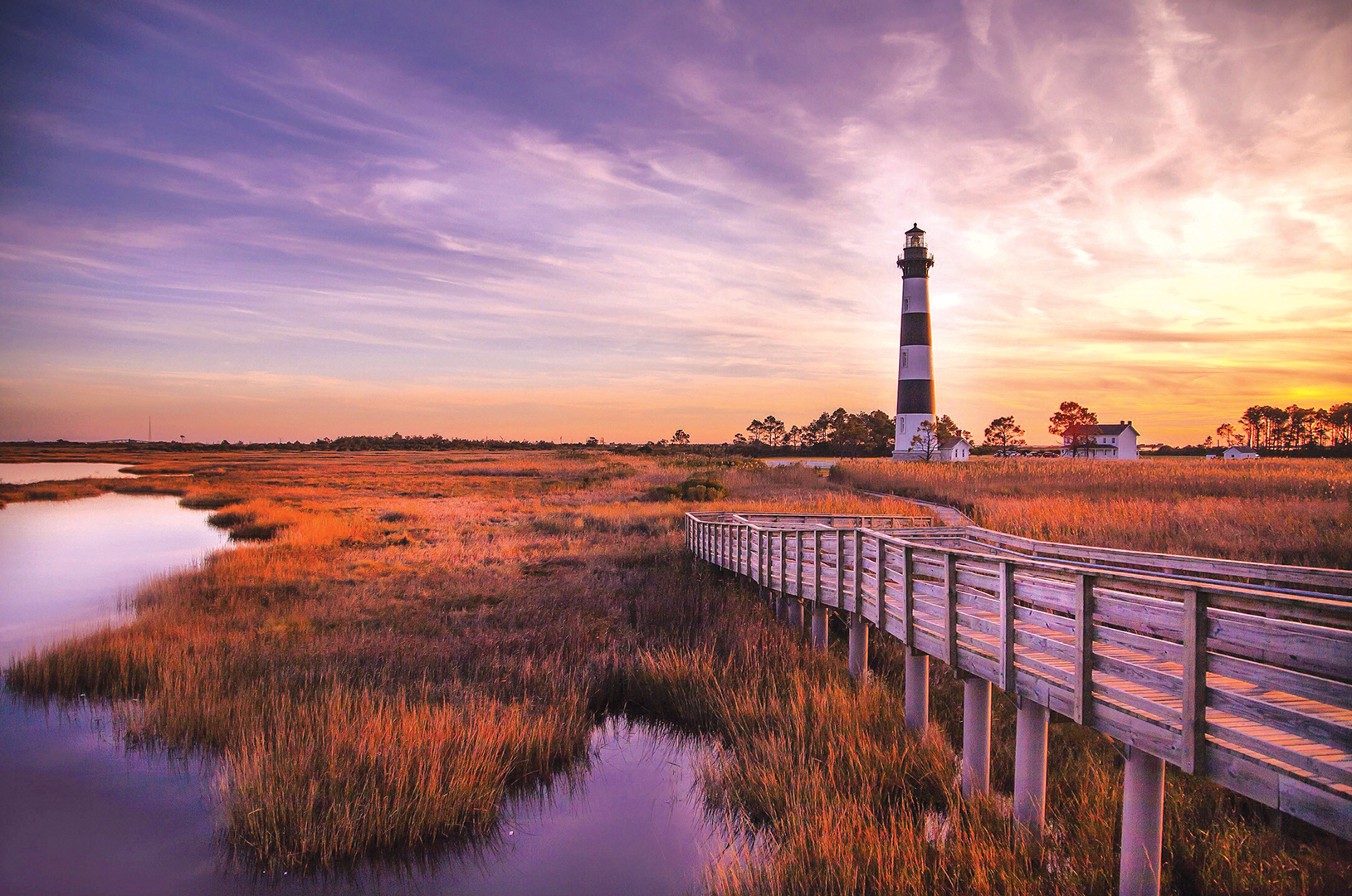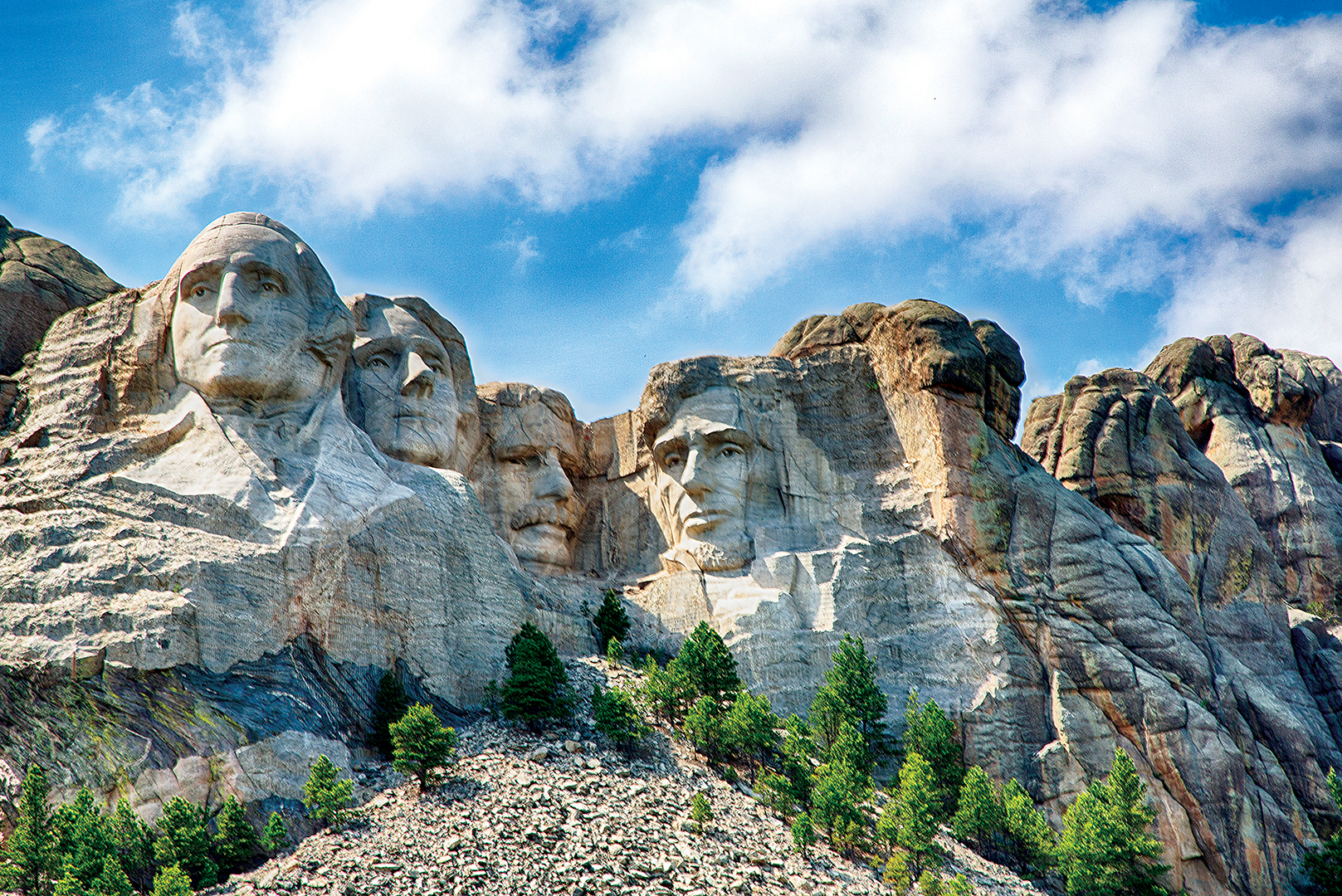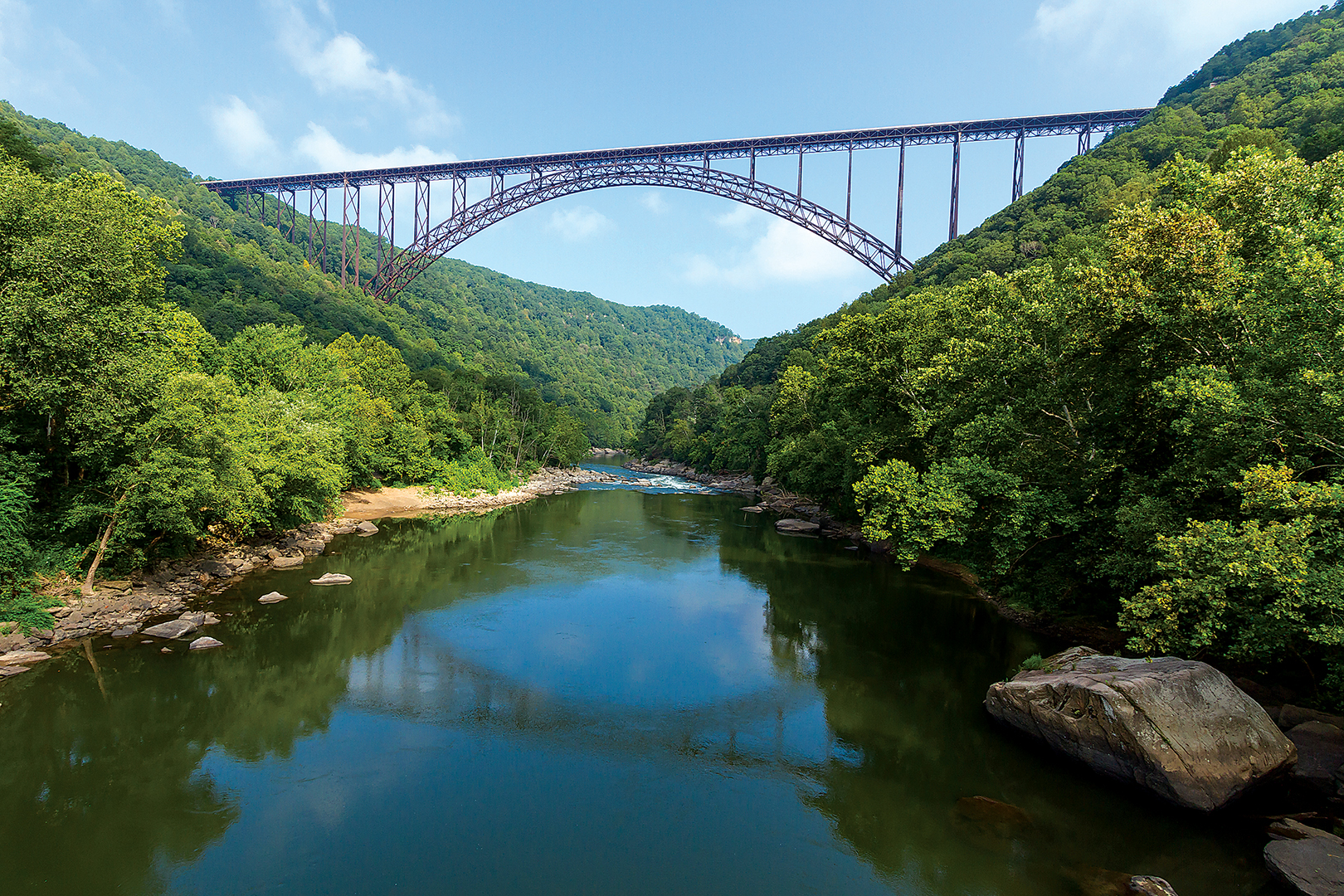Ah, summer vacation. Adventure calls. No matter where your travels take you this season, our 50-state bucket list of sorts will help you answer that call with some wild options you may never have considered - or known about.
Alabama: At the Spear Hunting Museum roadside attraction in Summerdale, you can find inspiration for the ancient hunting method, which is a legal way to bag wild boars in the state. Though for pointers from the man whose big game trophies are displayed, you'll have to read his books. Eugene C. Morris, the formerly self-proclaimed "greatest living spear hunter in the world," died of natural causes on a spear hunting trip in 2011.
Alaska: With a soft blue glow emanating from otherworldly rippled walls, the Mendenhall Ice Caves just outside of Juneau are an experience unlike any other. Even in Alaska. You can access the caves by trekking across the glacier field or paddling to the entrance on a variety of tours, and going with a professional is recommended.
Arizona: However you choose to experience the Grand Canyon, do it. It's a bucket list paddling destination boasting 280 miles of spectacular, off-the-grid scenery and some of the most infamous whitewater in the country for those lucky enough to score a permit from the National Park Service. For the rest of us, there are multiple hiking trails for day excursions or overnighters who want to see the canyon from all angles by hiking down to the river and back. The North Rim is generally less crowded.
Arkansas: America's first National River, Buffalo National River is a 135-mile paddler's paradise that floats through landscape so pristine, you'd almost expect to see a dinosaur emerging from one of the caverns that dot the waterside and the Lost Valley beyond. The rainfed river has multiple sections ranging from leisurely floats to tumbling rapids.
California: Forget the ocean sound machine and head to Julia Pfeiffer Burns State Park for the real thing. With rugged coastline at times reminiscent of an idyllic desert island, it offers the ultimate in coastal camping, though there is no beach or ocean access. If you can't snag one of the two camping spots, head inland after strolling along the accessible Waterfall Overlook Trail to experience California's majestic redwoods.
Adventure calls
What’s more adventurous than signing up for a total surprise? Awarded international travel company Black Tomato has launched Get Lost, offering a curated take on “Man vs. Wild.” The service pairs you with an expert to determine “how lost you want to be.” You won’t know where you’re going until you get there, though you’re welcome to select the environment in which to lose yourself — jungle, coast, desert, mountain or polar — along with some other parameters like budget. Otherwise, they take care of the rest, providing you with training, gear and safety surveillance as you attempt to find your way back to yourself. Learn more at blacktomato.com/get-lost.
Colorado: With 54 fourteeners (mountains over 14,000 feet), the highest state in the U.S. offers exceptional challenges for both hikers and mountain bikers. For some serious downhill action, the latter can also head to Trestle Bike Park at Winter Park ski resort. The highly awarded and rider-acclaimed bike park offers over 200 features and 40 miles of chairlift-accessible terrain, and if that's not enough, it connects with over 600 miles of trails throughout Fraser Valley for riders looking to slow down a bit.
Connecticut: If you don't trust yourself to visit Foxwoods Resort Casino, where you can zipline from the 32-story Fox Tower down to Mashantucket Pequot Museum and Research Center at speeds of up to 60 mph, head to the IT Adventure Ropes Course in New Haven. Featuring over 100 rope elements spread throughout the five-story indoor complex, it's billed as the world's largest indoor ropes course.
Delaware: The nation's second-smallest state is big on birding. Numerous areas offer prime viewing opportunities, including Prime Hook and Bombay Hook wildlife refuges, two of the best for birds in the eastern U.S. Expect to see abundant waterfowl, wading birds, shorebirds and songbirds, especially during migration. You can also spot bald eagles and hawks.
Florida: Stay 20,000 leagues under the sea, in a manner of speaking, at the Jules' Undersea Lodge in Key Largo Undersea Park. The kitschy 1970s-themed sub is reportedly the world's only underwater hotel, and you must scuba dive the 21 feet down to the lodge. (Classes are offered for those who aren't already certified.)
Georgia: Attempt to navigate your kayak around the "Eye of God" rapid in the Chattooga River, a whirlpool known for sucking in large debris.
Hawaii: The volcanoes that formed America's vacation island paradise remain one of the big draws. Volcano tours will take you over Moon-like lava fields to see the inferno below, while others explore the lava tubes left behind. A variation of a cave, the tubes are prominent among the islands, including some sea caves and underwater options off the dazzling coast of Na Pali, which itself looks the home of Jurassic Park.
Idaho: While not necessarily a renowned destination, the Black Cliffs are one of the most popular places to climb for those in and around Boise. The sheer, basalt facade offers hundreds of mostly easy to intermediate routes that mean you can squeeze in some time on the rock even if you don't have all day.
Illinois: With Chicago's juxtaposition of sandy beaches hemmed by glittering skyscrapers, it's clear this city likes to mix business with pleasure. Take a kayak tour through downtown for a unique perspective of the concrete jungle, or sign up for a running tour of the numerous sights by way of a 5k up to full marathon distance.
Indiana: Channel the spirit of the Indy 500 at the Major Taylor Velodrome, where herds of cyclists zip up banked walls at one of the country's few professional-quality cycling tracks. If that's not your speed, the velodrome is part of the Indy Cycloplex, which also offers a BMX track, mountain bike trails and a cyclocross course for professional events and recreationalists alike.
Iowa: Maquoketa Caves State Park gives visitors the unique chance to explore under the lushly forested landscape. The park contains more caves than any other state park in Iowa, and even above ground you'll be treated to surprising formations that jut out from the verdure, like the 50-foot-tall "Natural Bridge" and 17-ton "Balanced Rock."
Kansas: A visit to Tallgrass Prairie National Preserve is like traveling back to a time when Native Americans and bison roamed the 170 million acres of tallgrass prairie that covered North America - less than 4% of which remains today. The 10-mile Prairie Fire-Palmer Creek Loop near Strong City is a highly recommended route that combines the Scenic Overlook, Prairie Fire and Davis trails, along which you still might spot some bison. And with fewer than 30,000 annual visitors to the park, that might be about it.
Kentucky: The falls at Cumberland Falls State Resort Park are impressive, creating a 125-foot-wide curtain as they drop seven stories. But more impressive still is the rare phenomenon they help to create when the moon is full - the only place in the Western Hemisphere where moonbows occur on a predictable schedule. Also called a white rainbow, a moonbow is a rainbow created by the refraction of the moon's light. And to top it off, the park's 20-plus miles of trails have been rated the No. 2 spot for horseback riding in Kentucky Living magazine's Reader's Choice Awards.
Louisiana: Louisiana's swamps and the animals that inhabit them get most of the spotlight, but the area's fishing opportunities are what lures the locals. Toledo Bend offers year-round hauls of freshwater species including crappie, bream, white bass, striper bass and catfish. It's the only lake to be named the nation's No. 1 bass fishing lake by Bassmaster Magazine two years in a row. Fishing rodeos for the biggest catch are traditions in communities around the state if you're looking for some competition. Or head to the Gulf coast near Venice or Cocodrie to take on saltwater behemoths.
Maine: If you're looking for whitewater, don't overlook Maine. The Penobscot River is an extremely technical option said to be one of the most challenging in the eastern U.S. Jam-packed with Class III-V rapids, it also offers views of Mt. Katahdin, Maine's tallest peak and the northern terminus for the Appalachian Trail. The Dead River to the east stretches Class III-IV rapids over the longest stretch of continuous whitewater in the East.
More Info
For unique day or weekend road trip options close to home, call us for a copy of our Destination Guide for Weekend Warriors.
Maryland: You don't have to travel to the far-flung regions of Alaska to go dog sledding (yet). Maryland Sled Dog Adventures, billed as the state's only dog sled touring operation, offers family and individual rides along with educational opportunities. Though the average year sees six months of winter weather across the state, snow is not a requirement. Dune buggy-like "rigs" are commonly used in place of sleds when there isn't enough precipitation for the sport. Though if you're craving winter solitude, the kennel offers a multi-day Maine sledding adventure.
Massachusetts: Sure, you probably feel like singing when you get to the beach, but have you ever been to a beach that sang to you? Roughly 30 miles up the coast from Boston, you'll find one of only a handful of beaches in the world where this unexplained phenomenon occurs: Singing Beach at Manchester-by-the-Sea. (Though it sounds more like a bark.)
Michigan: Ranked one of the top 20 trail systems in the world by the International Mountain Biking Association, Michigan's Copper Harbor Mountain Bike Trails offer a variety of gateway, cross country, flow and gravity trails, with restaurants, places to stay and a brewpub all just a short ride away.
Minnesota: More than 1,200 miles of canoe routes wind their way through northeastern Minnesota's 1-million-acre Boundary Waters Canoe Area Wilderness, offering paddlers seemingly endless opportunities to explore thousands of lakes and streams carved by ancient glaciers.
Mississippi: Not everyone can afford a trip out West, but a 6-hour drive down to Foxworth, Mississippi, should be doable for most. There, you'll find the southern sister of the country's most majestic canyon. Called the Little Grand Canyon (of Mississippi), the steep walls of Red Bluff are a wash of pinks, yellows and oranges and a most unusual sight in this flat, lush state.
Missouri: Johnson's Shut-Ins State Park features rock-hewn wilderness laced with rapids, natural water slides and swimming holes - the result of the Black River being "shut in" by the igneous rock.
Montana: The remnant of Grasshopper Glacier is a sight in and of itself, its receding icy wall leading down to an aquamarine glacial lake. But inside the glacier is another sight: the remains of tens of millions of a now-extinct type of Rocky Mountain locusts.
Nebraska: Named one of the nation's top family reunion spots by USA Today, Fort Robinson State Park offers hiking, mountain biking and equestrian trails amid 22,000 acres of Old West scenery. The site of Sioux Chief Crazy Horse's death, the park pays homage to its cowboy roots with horse-drawn tours among the butte-dotted plains, summer productions by the on-site professional Post Playhouse and weekly old-school rodeo.
Nevada: If you don't feel like fighting the crowds at Old Faithful, head to Nevada for a relatively unknown geyser located on 3,800 acres owned by the Burning Man Project. Appearing like an animal crawling out of the Earth, the multi-hued fixture is as surprising and colorful as the art installations of the legendary festival held nearby. Burning Man Group allows the public to visit Fly Geyser on guided weekend nature tours.
New Hampshire: At Rockywold Deephaven Camps, you'll find throwback camp activities like capture the flag, tie-dying and canoe races (albeit with "wacky" takes like hand-paddling or standing). But you won't find only young campers - the nostalgic experience is for everyone in the family. While there are "wee campers" and teen programs, most of the activities welcome adults and children, though in true camp fashion they're separated, with the same programs geared toward one or the other at different times. Don't worry, off-duty employees happily serve as baby-sitters.
New Jersey: Off the coast of charming Cape May, the partially sunken World War I SS Atlas lures scuba divers to explore its concrete ruins, where large sea bass, stripers, blues, weakfish and flounder are known to hang out - and where it is rumored that golf ball sized Cape May diamonds can be found. The tumbled quartz crystals are favorited by tourists, and resemble diamonds when cut and polished, but have no real value other than to serve as a pretty reminder of "that one time I"
New Mexico: The winding drive to Gila Cliff Dwellings is harder than the roughly 1-mile/hour hike to the remote prehistoric site, but both are worth it. The cliffside became home to Mogollon people in the late 1200s and today is one of the only parks where you can still enter the web of fort-like rooms left built into the cliff. Several hot springs within an easy day-hike of the site are also popular draws, though this park still sees a fraction of the visitors that flock to the ruins at Mesa Verde National Park.
New York: Gorge Trail in Watkins Glen State Park belies the main draw of this extremely popular 2-mile loop. With 19 waterfalls and a hand-cut path descending through water-sculpted rock that feels like something out of "Lord of the Rings," it's no wonder this was named third-best state park in the country by USA Today.
North Carolina: You've heard about the synchronous fireflies in Great Smoky Mountains National Park (we hope), but did you know there is an even rarer phenomenon that lights up the North Carolina woods? Blue ghost fireflies hover above the forest floor around Hendersonville for a few weeks each summer, lending a bioluminescent glow that is the subject of several tours in the area.
North Dakota: This state is where Teddy Roosevelt said "the romance of my life began," and with its painted canyons, undulating prairies and verdant valleys, it's easy to see why. Today, 70,000 acres of that inspiring landscape bear his name, and while there are many ways to experience Theodore Roosevelt National Park's wilderness, the nearly 100-mile Maah Daah Hey Trail is a must for mountain bikers.
Ohio: If you think a safari zipline tour sounds unique, add Ohio to the mix and you've got one rare bird. The 2 1/2-hour treetop excursion at The Wilds in Cumberland takes you over exotic landscapes and the animals that call them home. An extension of the Columbus Zoo, it houses rare and endangered species like rhinos, giraffes, camels, painted dogs and cheetahs.
Oklahoma: Home to a surprising number of hot air balloon festivals, it seems you should add this to your Sooner State itinerary. It goes without saying that there are several tour companies across the state.
Oregon: Called one of the "7 Wonders of Oregon" and "the birthplace of American sport climbing," Smith Rock looks out of place in the forested landscape, its craggy spires the result of compressed volcanic ash formed 30 million years ago. Run, hike or bike your way to views that will make you feel like the only person left in the world. Or opt for one of the 35 (and counting) slacklines over the breathtaking gorges.
Pennsylvania: A 7-acre rock field may not sound like an interesting stop, but there's a reason Ringing Rocks Park strikes a chord with its many visitors, both young and old. When gently struck with a hammer or mallet, the rocks ring like a bell. Bring your own hammer - and appropriate footwear. The rocks can be slippery, and a few miles up the trail is a small waterfall.
Rhode Island: At Rose Island Lighthouse, you can act as an honorary light-keeper by booking one of the five available rooms, updated with amenities not present when the functioning lighthouse was built 100 years ago. When you aren't at your post, you can explore the 18-acre island, which is home to many shoreline birds and Revolutionary War relics, or hit the water that surrounds it.
South Carolina: Landsford Canal State Park has both man-made and natural allure. Large stone remnants of the pre-Civil War canal stand like pieces of a forgotten city near trails that wind through solemn forestscapes. The Catawba River, whose rapids the canal was built to avoid, offers paddling trails among the largest known stand of rocky shoals spider lilies, an endangered species that unfurls its white tendrils from mid-May to early June.
South Dakota: This rugged state may already be on your radar if you're a climber, but if it isn't, it should be. Its remote landscape offers a modern-day cowboy scenario of sorts, with limestone canyons, sandstone chunks and granite towers still left to discover and develop. Meanwhile, its iconic landmark, Mount Rushmore, draws visitors to marvel over the faces carved into the coarse granite - and scramble up sport routes on the backside; the Needles' granite spires have a proud and renowned history of trad; and there are multiple places to take things to the next level with ice climbing, like nearby Black Peak.
Tennessee: There are many rewarding sights to be found along forested trails, but one on the Tennessee-North Carolina border may be the most unique. A steep and secluded 2-mile hike through bear country will take you to Lost Cove, an abandoned logging town where you can wonder about the lives of those who lived in the houses that still stand and those interred in the historic cemetery.
Texas: San Antonio is home to numerous attractions, including the Alamo, Six Flags Fiesta Texas - and the largest summer colony of bats in the world. Some 20 million Mexican free tailed bats spend the season in Bracken Cave, emerging at night in a swarming black cloud that would inspire Alfred Hitchcock.
Utah: After exploring Arches National Park - home to the highest concentration of natural arches in the world - bed down at Devils Garden Campground, which offers flush toilets, drinking water, picnic tables and fire rings. Your location inside the park means more time for hiking or biking the famed Martian-like terrain, and its location in the middle of the desert means a dazzling blanket of stars.
Vermont: Stretching all the way to Canada, Lake Champlain offers plentiful waters with just as plentiful fish: salmon, northern pike, white and yellow perch, crappie, walleye and lake trout. For a unique challenge, try ice fishing here, one of the top-rated spots in the country.
Virginia: Though the highest peak in Virginia, the view from Mount Rogers is not necessarily the top reason people come here. Sharing this 200,000-acre mountainscape with hikers and mountain bikers are wild ponies that many visitors are lucky enough to view.
Washington: The San Juan Islands are a charming retreat, whether that means leisurely cycling or strolling along the coast (Orcas Island does offer some challenging climbs), watching for wildlife including orcas and bald eagles (the archipelago is home to the greatest concentration of our country's mascot), or losing yourself in old-growth forest. Though the crowds will be more concentrated in the summer, the islands are said to be one of the world's best spots to see bioluminescence in July and August, streaking the water like shooting stars as you paddle through.
West Virginia: Base jump off the ridiculously tall New River Gorge Bridge, which is only legal one day a year. "Bridge Day," the third Saturday in October, draws tens of thousands of spectators and a cap of 450 experienced skydivers who opt for the fast route down to the ground (or rapids) 876 feet below.
Wisconsin: Devil's Lake State Park in Wisconsin boasts 1,800 identified climbing routes on its quartzite bluffs and crags, offering challenges for more experienced climbers as well as options for beginners.
Wyoming: We're sure you've heard of Yellowstone, the Tetons and Bighorn Canyon, and you definitely shouldn't miss those. But also among the state's impressive natural attractions is the Red Desert, the largest dune system in the U.S. Its 9,000 square miles offer the kind of awe-inspiring scenery you'd expect out West, along with vast expanses straight out of a Ridley Scott film. There are numerous options for exploring this unknown wilderness, but our favorites are ATVs and llamas.
